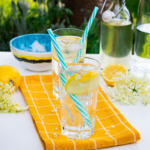
My Lemon Elderflower Syrup is a family recipe prepared without cooking.
You will need fresh elderflower for this recipe so that the syrup gets infused within 2 days.
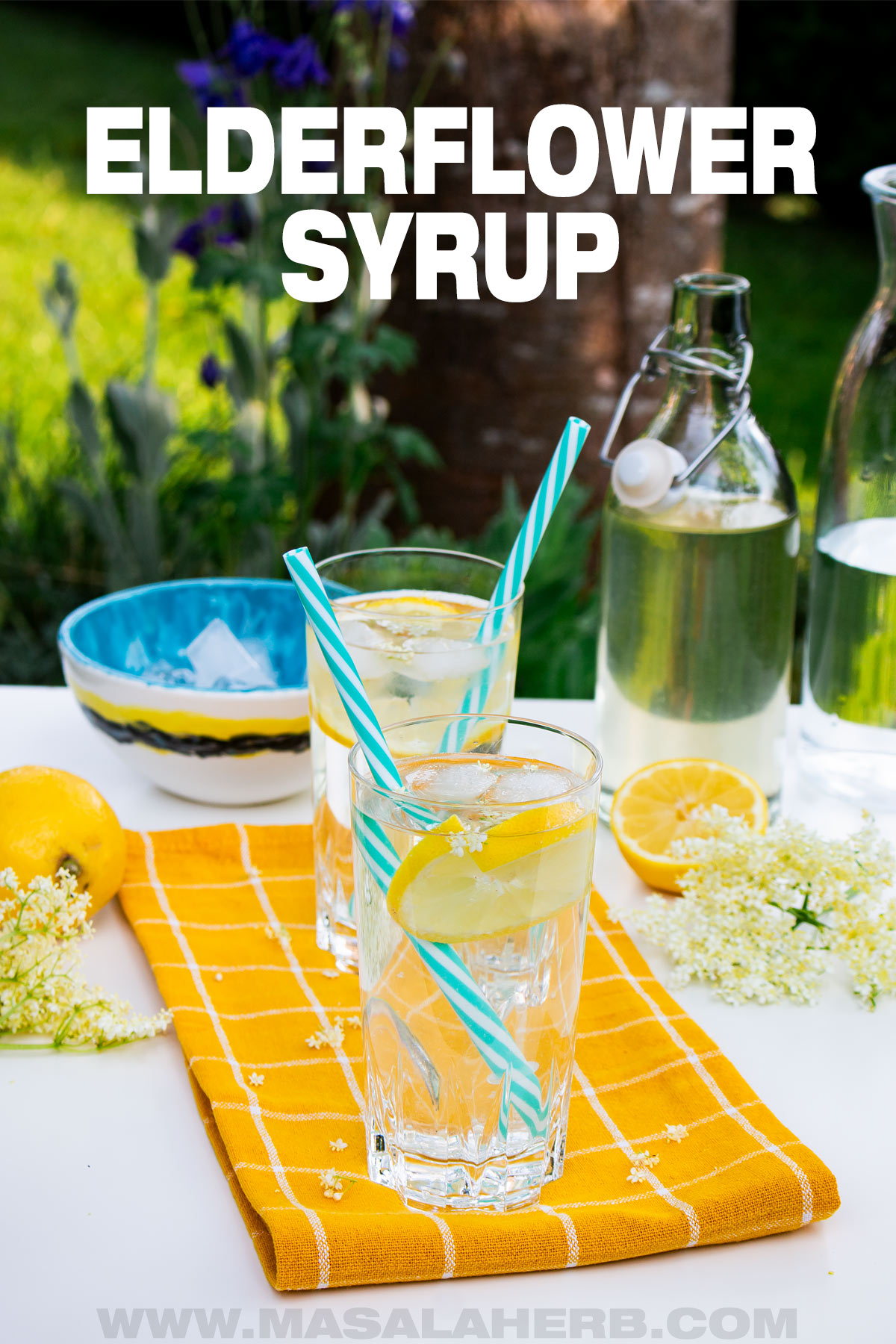
Jump to:
📕 What are Elderflowers?
The elderflower is a flowering plant with strongly flavored, small cream-colored blossoms. It's also known as Sambucus.
The little blossoms of an elderflower bush taste intense, delicate and floral. You can smell the flowers from afar!
Elderflowers grow on large green shrubs, which can turn into small elder trees.
They flower in June, which usually depends on the altitude and weather conditions. I get to pick them always in the second and third week in June, that means in the late spring to early summer weeks. Sometimes also in July.
If the blossoms are let on the plant, they turn into elderberries. These can then be used to make a syrup too or an elderberry jelly.
Elderflowers are super common in Austria, Germany and neighboring countries and the most common way to enjoy them is turned into a syrup. The flowers are also called Holunder in German.
In fact, Elderflower syrup has been produced in local homes for ages, even the Romans mentioned it.
The shrub itself grows in Europe, North & South America, Asia and Australia, so maybe it might be growing in your neighborhood!
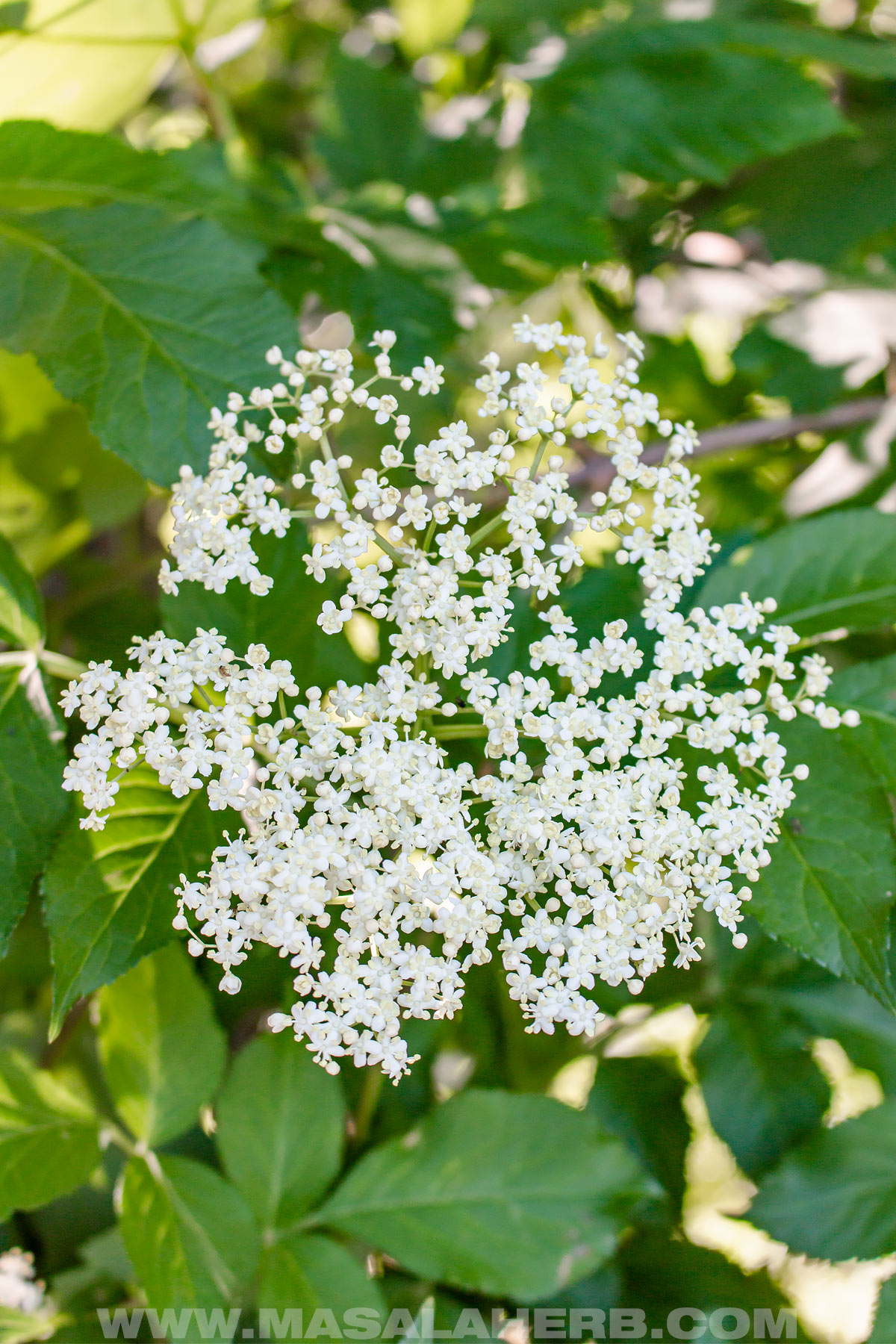
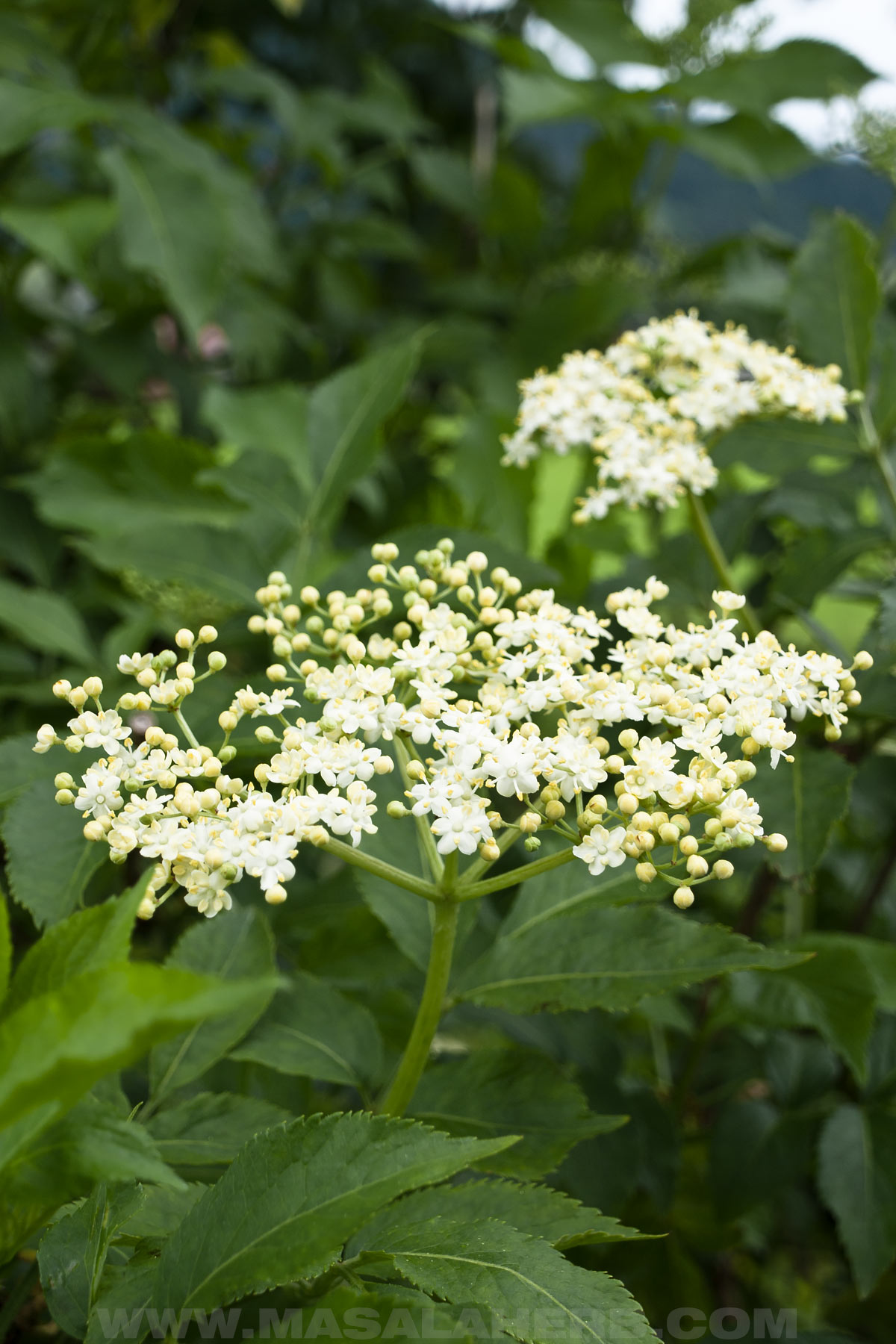
💡 Why is this Elderflower Syrup Recipe different?
This is a cold elderflower syrup recipe.
That means the syrup is prepared by infusion without having to cook the tender elderflower blossoms.
Cooking fresh elderflower blossoms will destroy the fragile flavor, and therefore they should never be boiled.
To make sure that the syrup preserves properly for a longer period of time, we add sugar, lemons and citric acid to make this cold syrup.
The crucial point here to succeed with this recipe, is to work in a clean environment, with clean well scrubbed bottles and utensils.
This is a must so that you don't get any harmful bacteria into your beautifully homemade syrup.
My elderflower syrup recipe is a family heirloom, and people in the Austrian alps have been making it this way since ever.
We prepare a homemade elderflower cordial in the hot summer months to help us cool down.
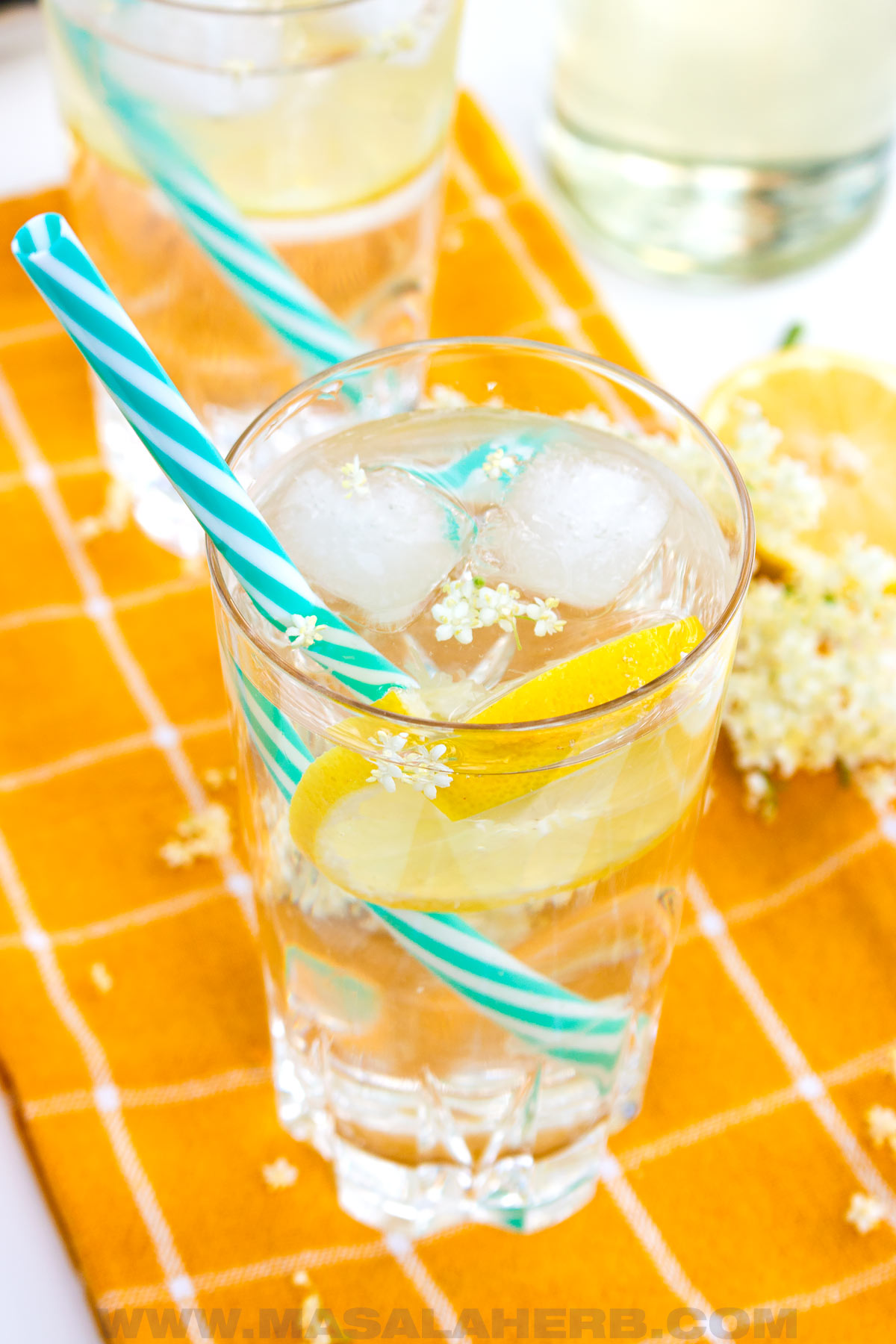
🌸 Ingredients
You will need 5 ingredients in total to make your own elderflower cordial recipe.
- Elderflower – Fresh opened blossoms only. Old beliefs say to pick the flower heads before sunrise. If a shrub has many lice, try to find another one instead as it's difficult to wash off all the lice. A large flower head is the size of an adult hand.
- Lemons – Preferably large fresh, organic, untreated and unwaxed lemons. Half of the lot will be juiced, the other half cut into eights.
- Water – Cold water only.
- Sugar – A sugar that dissolves well in cold water. We get white fine granulated syrup sugar in Europe, but you can use regular fine granulated sugar, just that you will have to stir much longer. Another option is to use powdered sugar (confectioners sugar) as it dissolves quickly.
- Citric Acid – Don't skip this ingredient, it helps in preserving your syrup.
I also mention vinegar in the recipe card. The vinegar is optional and helps in washing off insects from the flower heads.
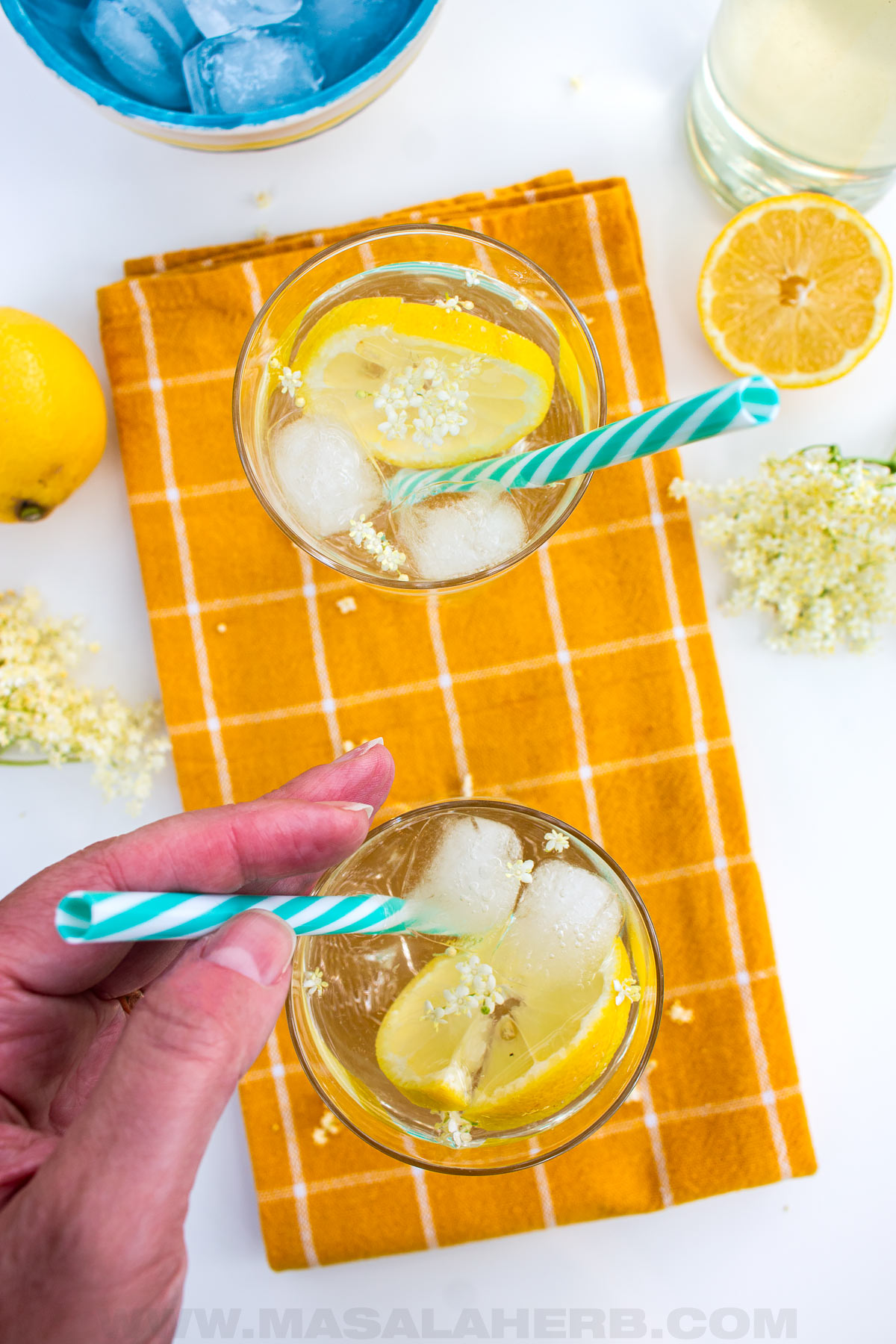
🔪 How to make it?
Here is how this syrup is made without having to boil the flowers.
The full recipe instructions with US and metric measurements can be found further below in the recipe card with a DIY video.
Step 1
Pick your flowers fresh and rinse them to get rid of any impurities. Break off stems.
Rinse the lemons, cut 3 lemons into eights and juice the remaining 3 lemons.
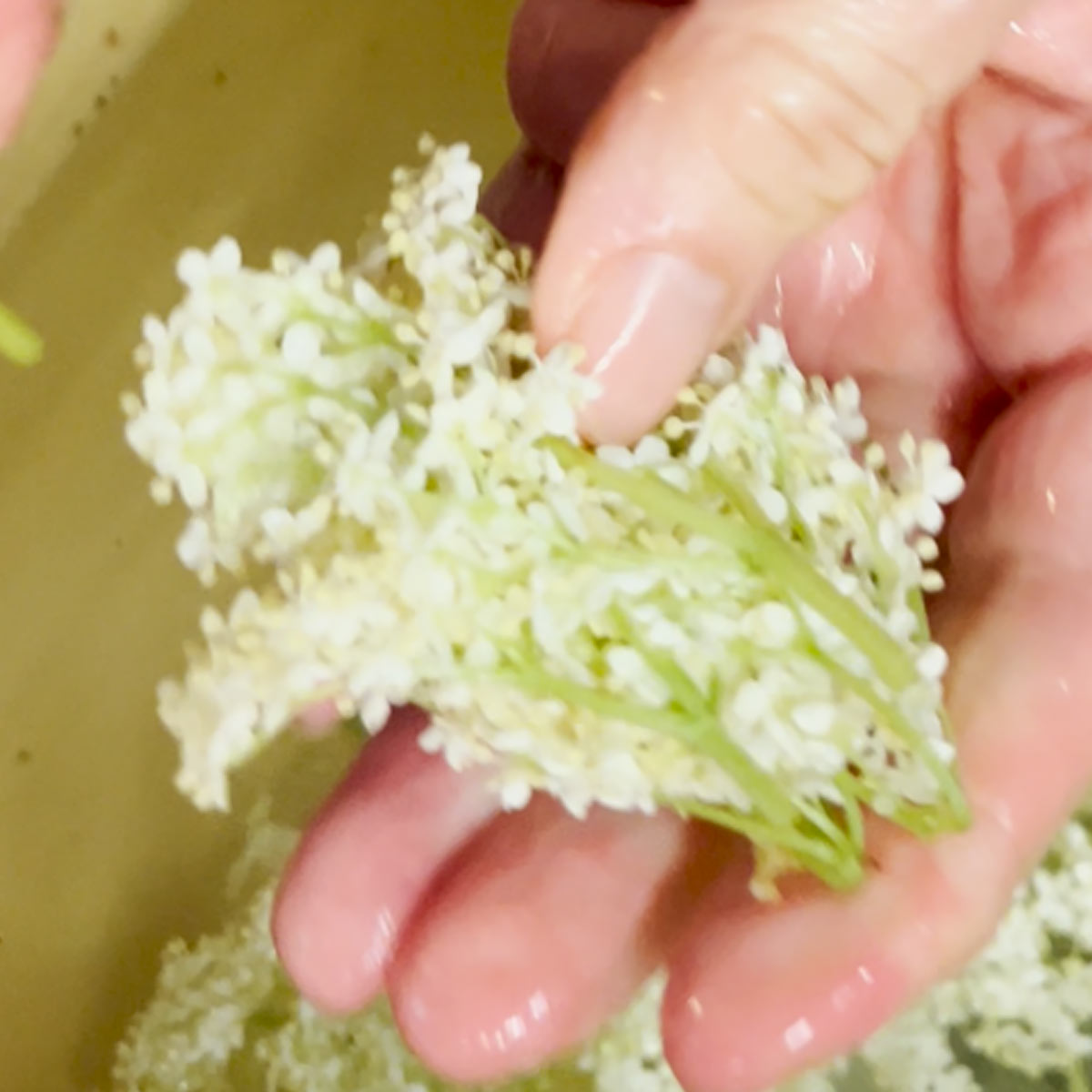
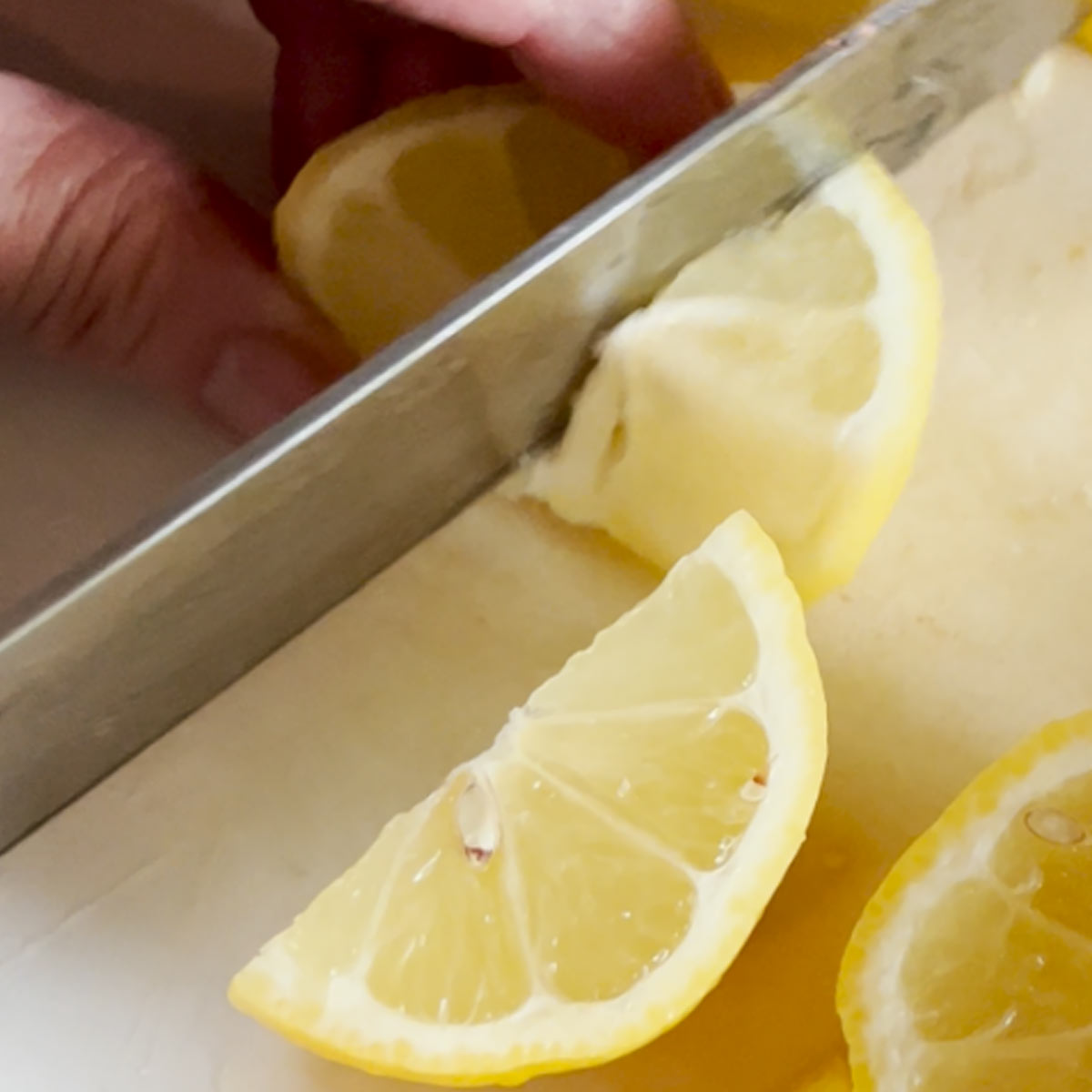
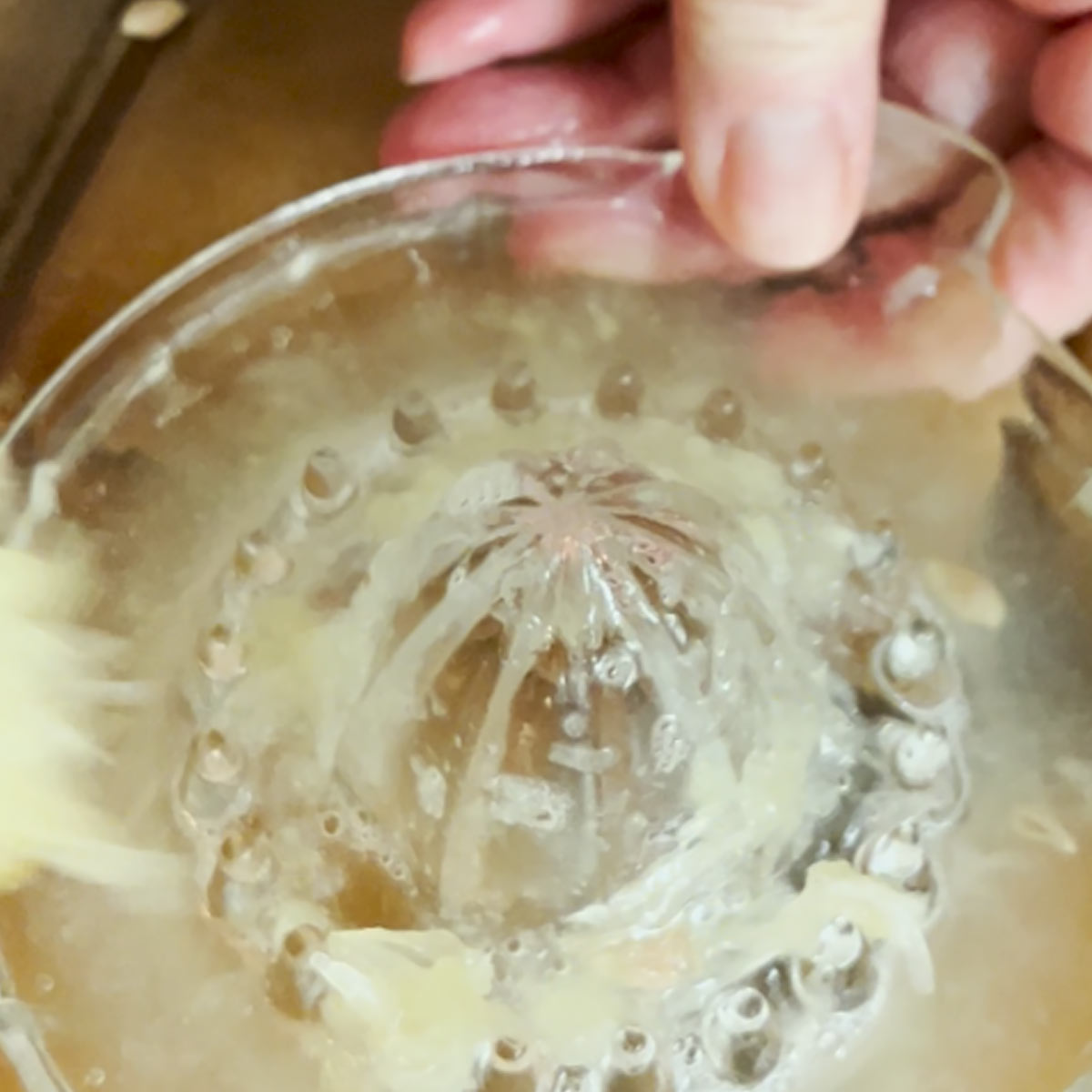
Step 2
Add to a large clean bucket the water, elderflower heads, lemon pieces, lemon juice, sugar and citric acid.
Mix everything well so that the sugar dissolves well. Close the bucket with a lid.
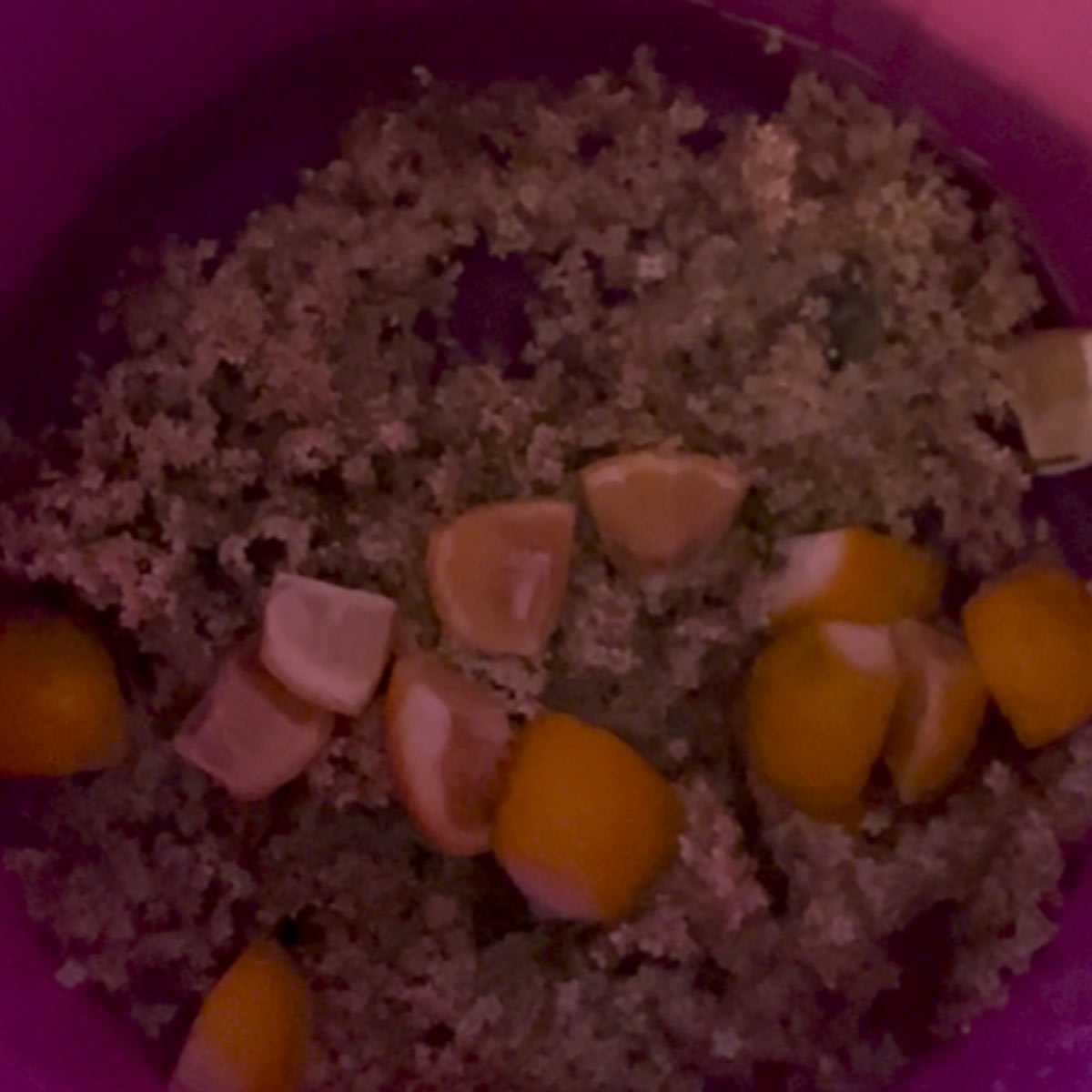
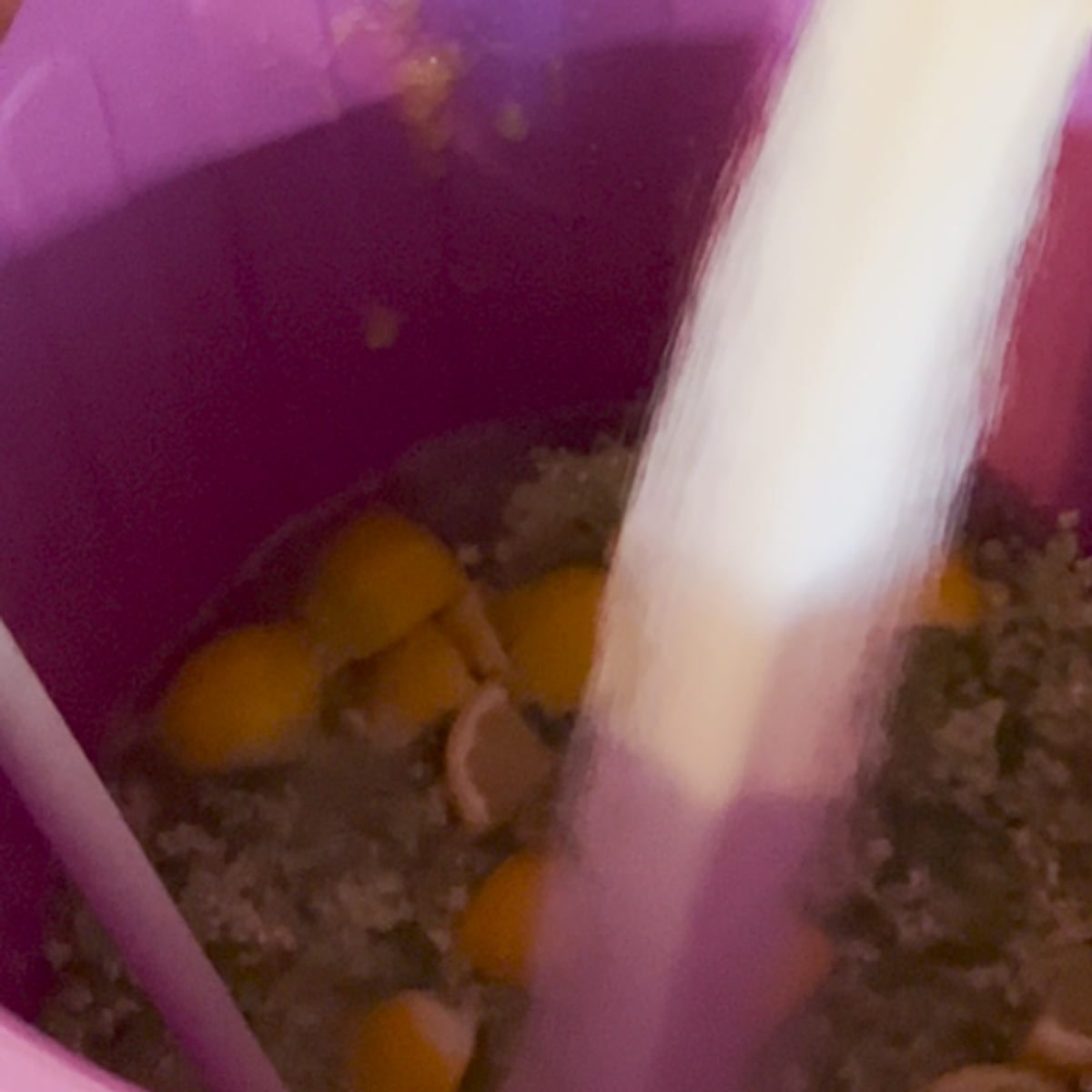
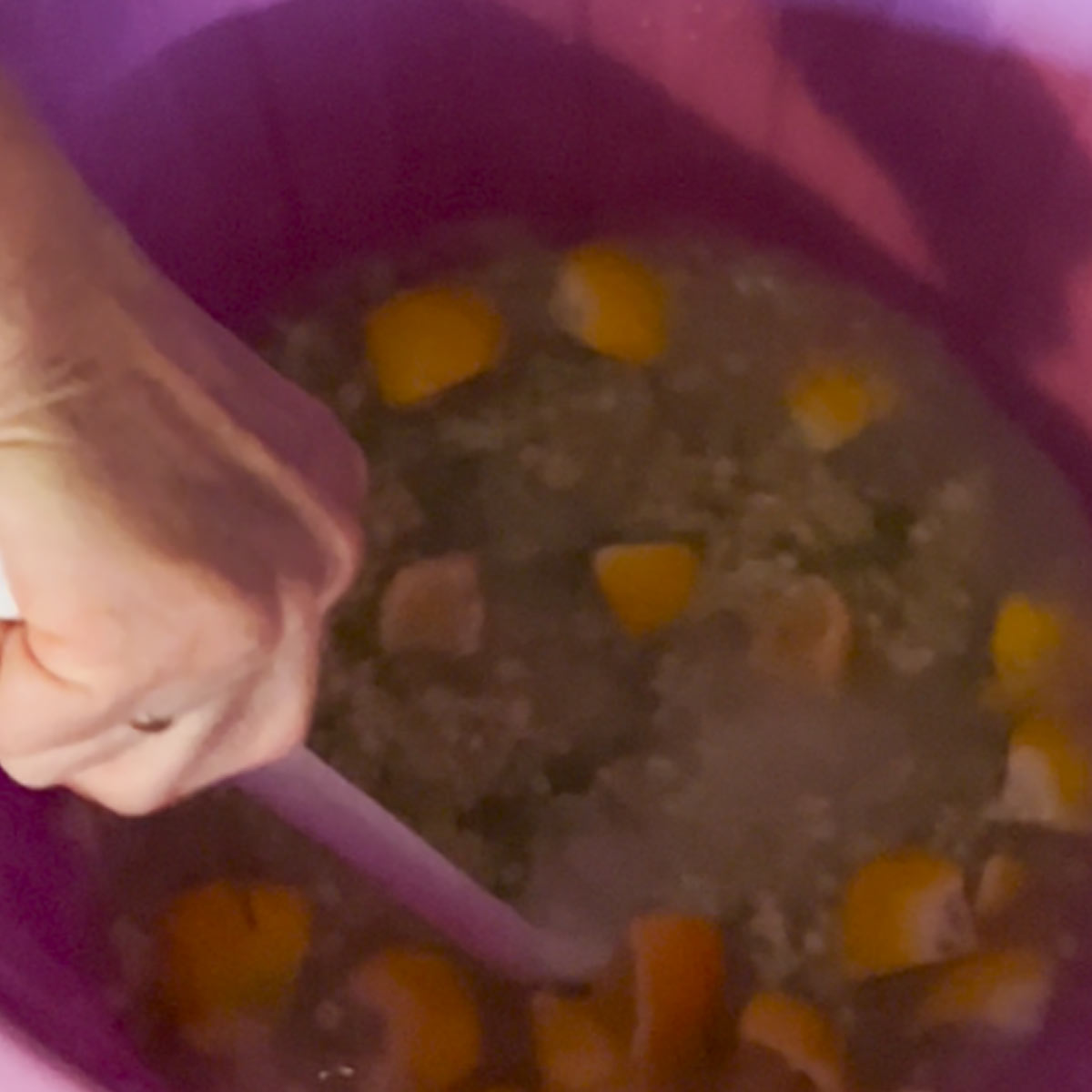
Step 3
Mix the content well again after 24 hours.
Leave the syrup to infuse for two days in total.
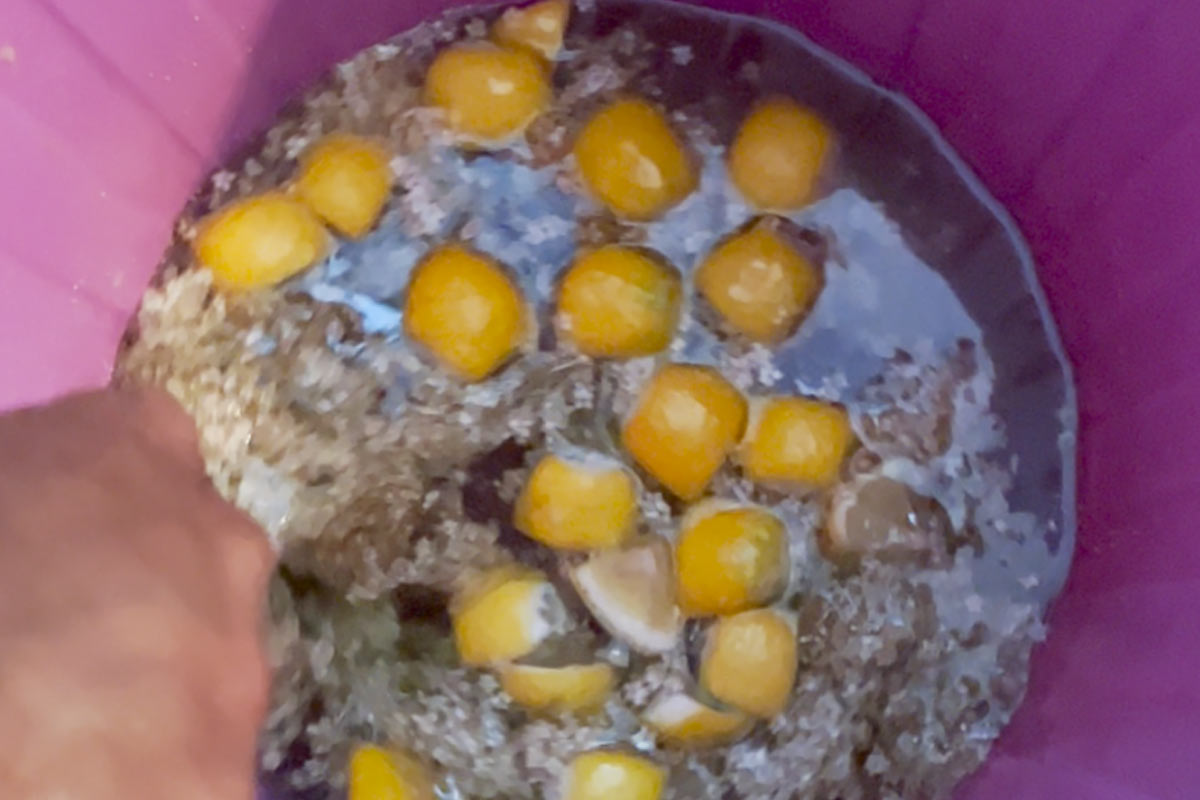
Step 4
After two days, keep washed and clean bottles with a large funnel and fine sieve.
Pour the elderflower liquids through the sieve, so that it collects in the bottle. Fill up to the top, repeat with all the syrup.
Take closed filled bottles through water to remove sticky syrup. Store or use straight away.
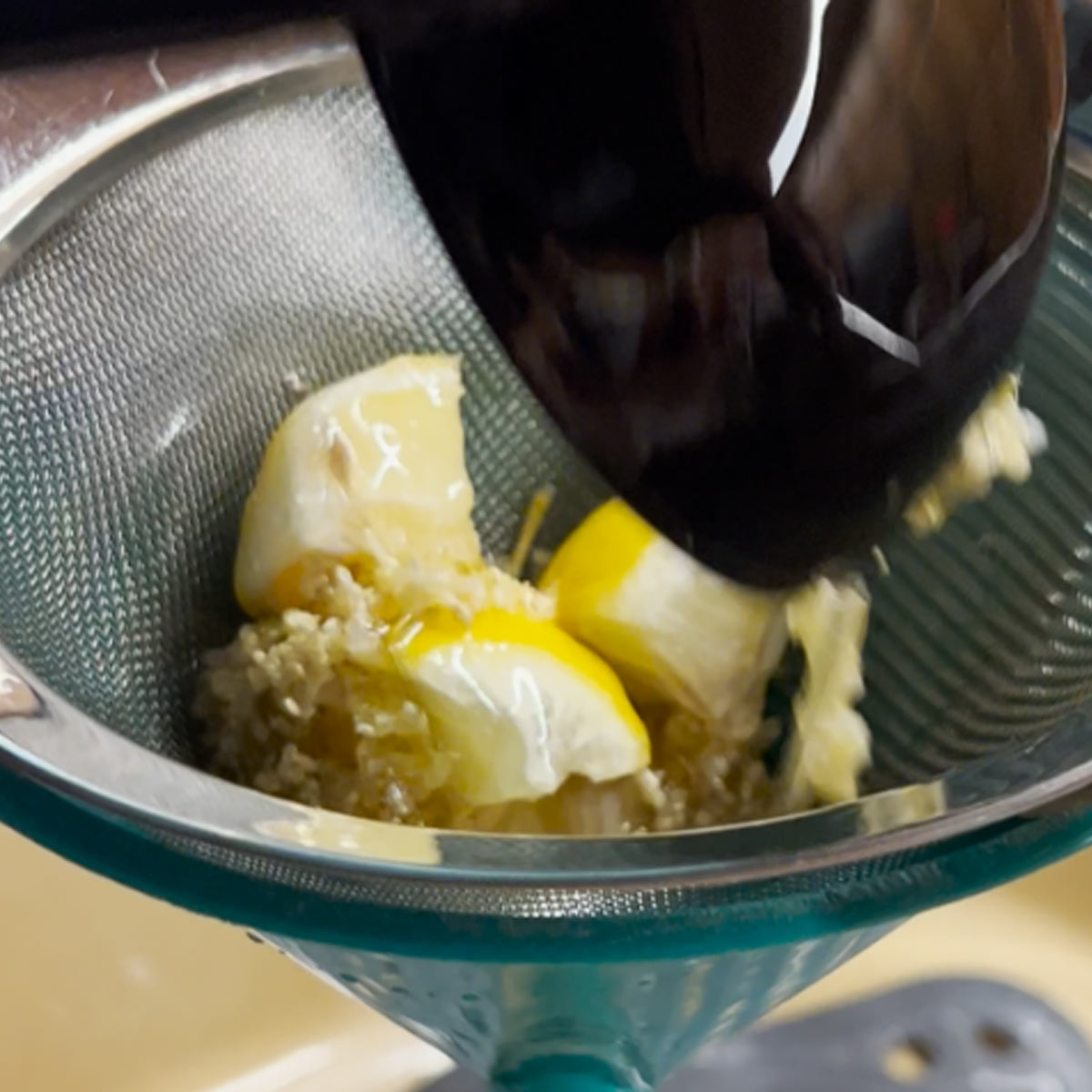
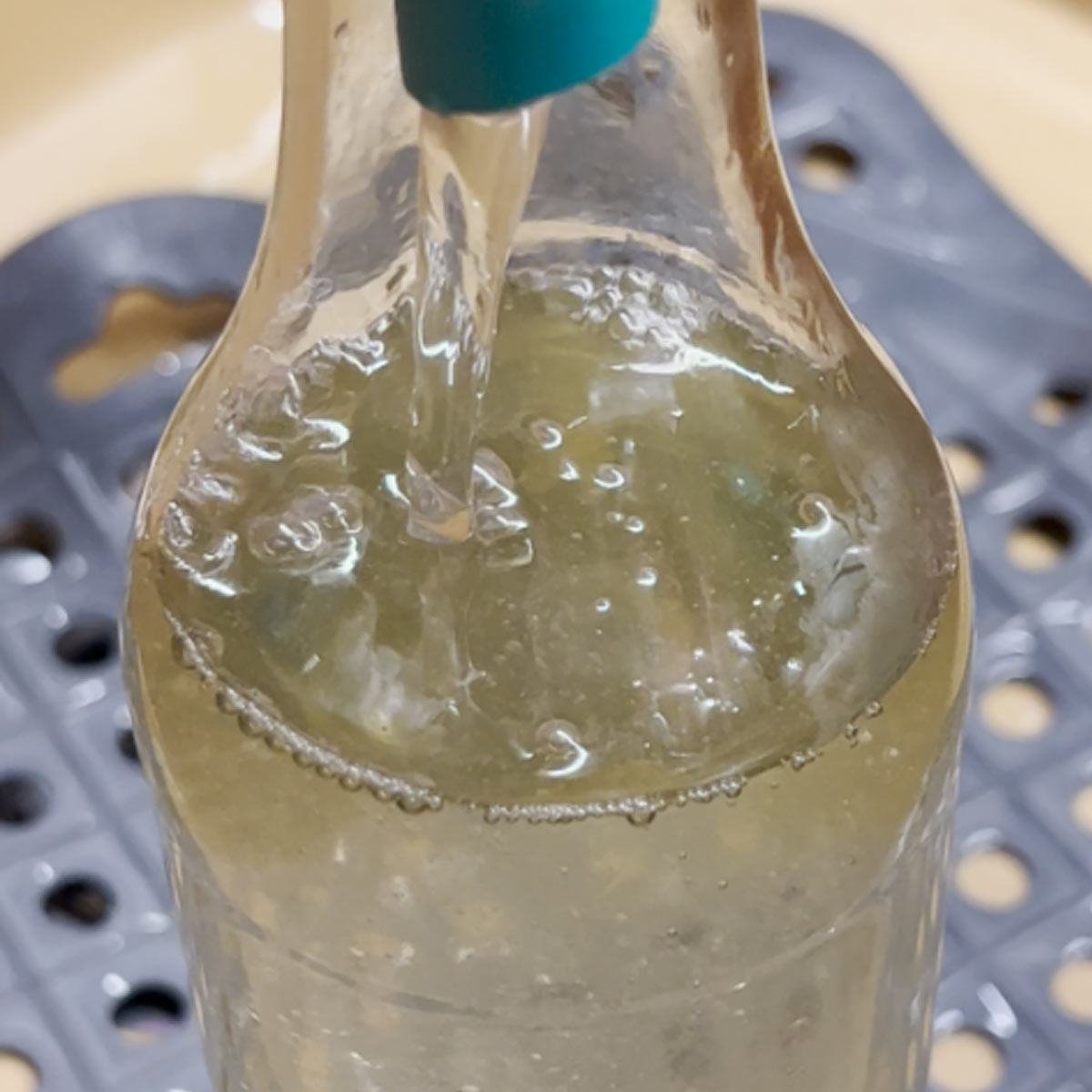
🥣 Uses
We usually, dilute our elderflower syrup with plain fresh water or sometimes even with soda water to serve as a Elderflower cordial or lemonade.
There is a benefit of drinking water diluted elderflower cordial as it refreshes you when the days get hotter.
The elderflower cordial can be used as a syrup to prepare exciting cocktails. I recommend my Elderflower Gin Cocktail to start out.
You can use the syrup to infuse ice cream, sorbets and other desserts. You can also drizzle some syrup over a pound cake or serve it with pancakes.
Another idea, is to add a teaspoon of elderflower syrup to your muesli or plain homemade yogurt.
🍱 Storing
Store closed bottles on a shelf in a dark place, away from direct sunlight, humidity, and heat.
If you also followed all the instructions, by working with clean utensils in a clean kitchen, your elderflower syrup will last for up to 12 months.
Once you open a bottle, store in your fridge until you are done with it. Try to finish it within 2 weeks.
You can freeze elderflower syrup in bottles too. To thaw, keep out and store in your fridge once opened.
If you find that your elderflower syrup is getting cloudy and slimy after a few months, discard immediately as it has expired. This can happen if you live in a tropical climate.
We usually prepare elderflower syrup before the hot summer months, and we tend to finish them all by the end of the summer, but we prepare a lot, so drinking elderflower syrup in winter has become a norm.
I recommend that you label your bottles with name and date. Your future self will thank you.
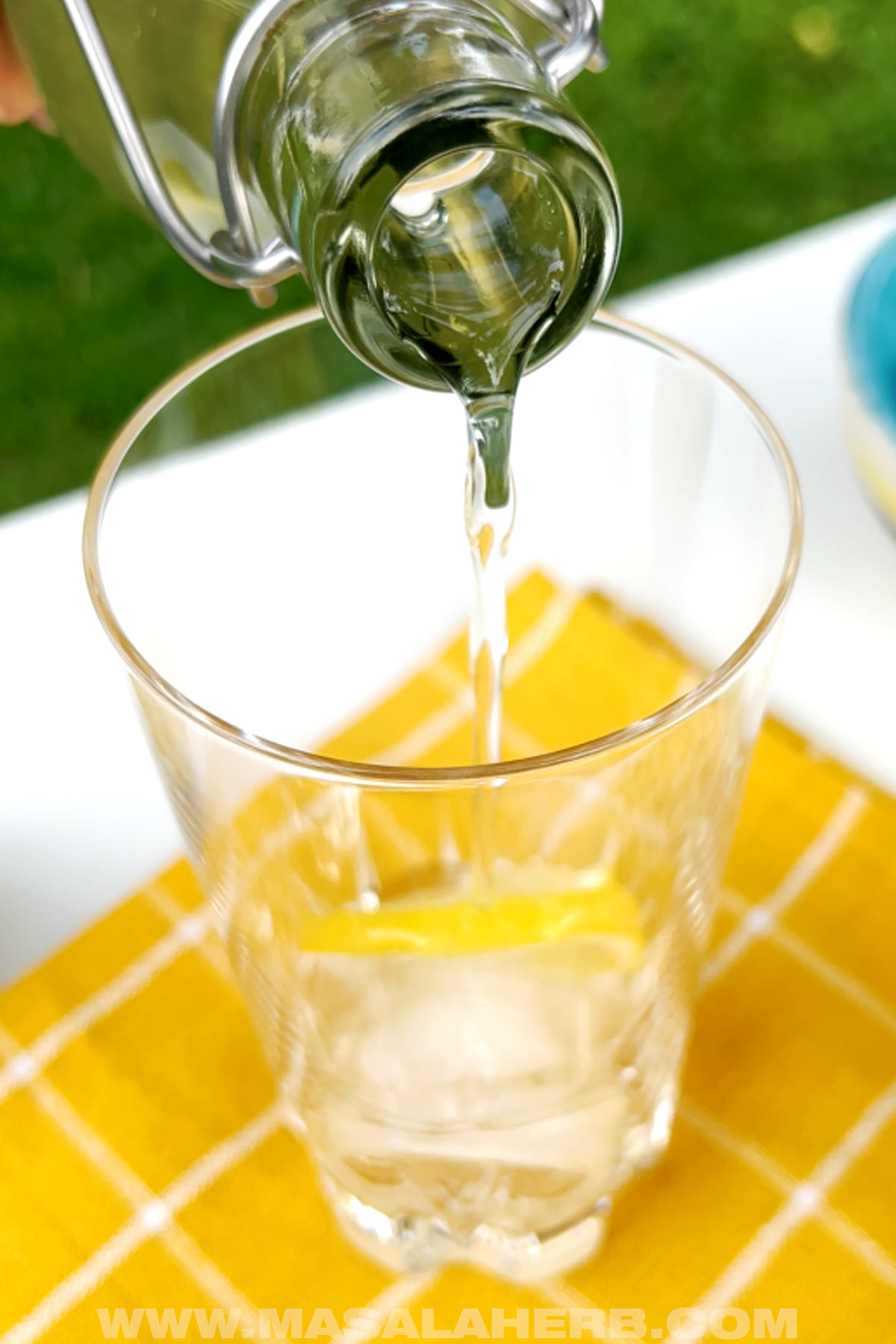
💭 FAQs
Yes, this elderflower syrup is safe if you follow my instructions properly. This is a cold preparation for an elderflower syrup, and you have to follow the recipe to the detail. Don't cut on the sugar and lemon and don't omit the citric acid, as these ingredients are crucial in the preservation of your homemade elderflower syrup. Work with clean washed and rinsed utensils and bottles. Keep the bucket with the syrup to infuse in a dark, dry and cool area. Don't keep the syrup for more than 2 days out. Store the bottles in a save place.
This syrup tastes refreshingly of elderflower blossoms and lemon. It's sweet thanks to the flower and sugar, and acidic, due to the lemons and citric acids. It's great when the temperatures rise!
It stores well, and you can just pour some in a glass and top it up with water to drink it. Elderflower cordial helps to cool you down from within.
No, elderberries are the flowers turned into berries. Elderberry syrup is prepared differently and tastes also very differently to elderflower syrup.
Yes, it's safe for consumption. If you have health conditions or if you are pregnant, consult your physician.
👁️ More flower blossom recipes
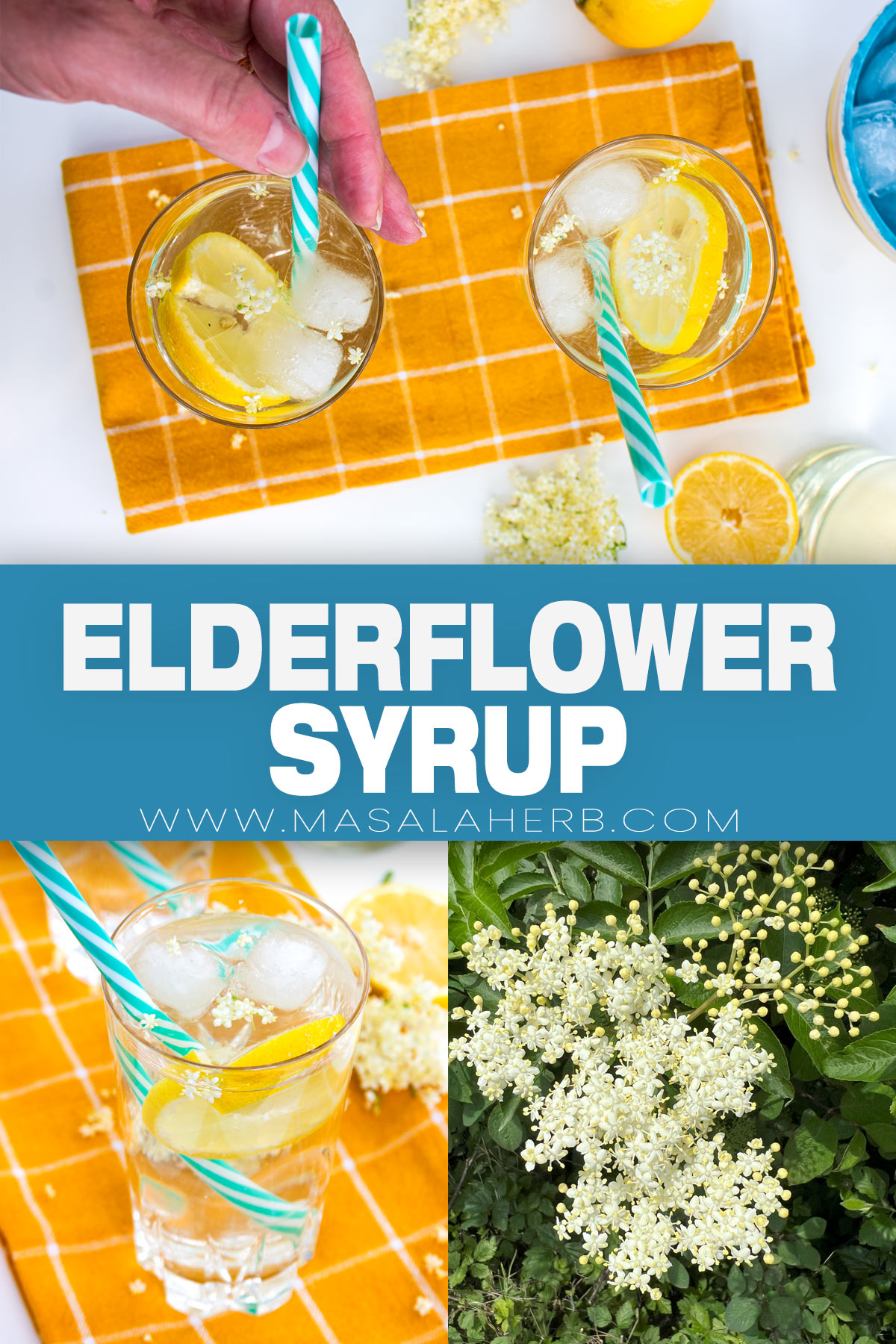
📖 Recipe
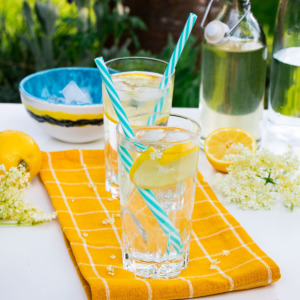
Lemon Elderflower Syrup Recipe
Ingredients
To clean the Elderflower
- 20 Large Elderflower Heads with opened flowers
- 1 Tablespoon Vinegar any Vinegar
To prepare the Syrup
- 6 Lemon *see Notes
- 12½ Cups Water cold
- 8.8 Pounds Sugar *see Notes
- ½ Cup Citric Acid Powder
Instructions
Prepare Elderflower and Lemon:
- Place fresh flowers into fresh cold water and add a dash of vinegar to the flowers. The vinegar will get rid of impurities and insects. If there are lice, repeat the process, until you are left with clean, insect-free elderflower.20 Large Elderflower Heads, 1 Tablespoon Vinegar
- Break and discard the main green stem part but keep the flower branches that hold the flowers.
- Rinse lemons well. Three lemons need to be cut in half and juiced. Discard the empty lemon halves and keep the lemon juice at the side. For the remaining three lemons, cut off and discard the ends and cut your fresh lemons into eights.6 Lemon
Prepare Syrup:
- Keep your large bucket ready. Make sure it was scrubbed with soapy water and rinsed.
- Pour the water into your bucket and place in the clean flowers.12½ Cups Water, 20 Large Elderflower Heads
- Add the lemon eights and lemon juice to the bucket.6 Lemon
- Pour in all the sugar together with the citric acid.8.8 Pounds Sugar, ½ Cup Citric Acid Powder
- Stir everything well with a long handled cooking spoon, until all the sugar is dissolved. This can take a few minutes.
- Close bucket with the lid well.
Leave Syrup to Infuse:
- Leave to sit in a cool place, away from heat, direct sunlight and humidity. The elderflower mixture needs to get infused and that takes 2 days or 48 hours in total.
- After 24 hours, or 1 day, open the bucket and stir well again with a clean long handled spoon.
- Close again with the lid and leave to infuse for the rest of the time, which is another full day or 24 hours. On the second day you get to strain the syrup.
Strain Elderflower Syrup:
- Keep clean soap - washed bottles ready with bottle caps. Place a bottle into your kitchen sink and keep a large funnel with a large fine sieve over that.
- With a soup ladle, pour the infused elderflower syrup into the sieve so that it filters the flower and lemon pieces. The syrup will run down through the sieve and the funnel, into the bottle. Press the flower and lemon pieces so that all the syrup comes oozing out.
- Fill up every bottle to the top and close well with a bottle cap. Take the syrup filled bottle through running water to wash off the sticky syrup.
- Repeat the process with the remaining syrup and fill up all your bottles. Discard the flower and lemon remains.
Storing and Using Elderflower Syrup:
- Store in a cool and dry place, away from direct sunlight. You can use it straight away too. It's good for a year if well stored (and if you worked in a clean kitchen with clean bottles).
- To use, pour some as per preference into a drinking glass and top it off with cold water, and if you like, ice cubes.
Notes
- Pick only fresh elderflower with open blossoms. The base recipe calls for 20 large flower heads (size of a hand). If they are smaller, add a few to the lot.
- 8.8 pounds or 4 kilograms of fine crystal sugar equals to about 20 cups.
- Use fine crystal white sugar or a sugar type which dissolves fast. In Europe, you can get a crystal sugar type known as “Syrup” sugar for canning (not the same as pectin sugar!!). If you want to make your life easier, use simply powdered confectioners sugar.
- I recommend using a large plastic bucket with a lid that can be screwed on or one that closes well without air gaps getting formed.
- Please consider using only organic untreated lemons. That means lemons that have not been sprayed with pesticides. This is because we use the lemon skin in this recipe, and you don't want odd chemicals in your drink.
- You can choose to stir more frequently during the resting/infusion period of your syrup. Stirring once only after 24 hours will do the trick too as long as you stir really well. If you notice that the sugar is not dissolving well, stir more frequently.
- One batch (basic recipe) makes about 10 x 16 oz/500 ml bottles.
- It's better to prepare this large batch because elderflower cordial makes a great gift and can be stored for up to 10 months in a cool and dry place if kept in sterilized jars.
Equipment
- 1 Fine-Mesh Strainer large
